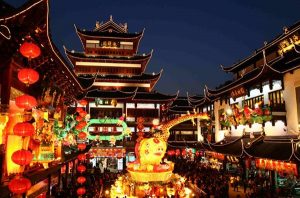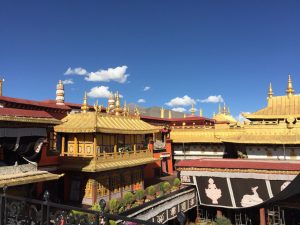 The Jokhang Temple is a true sacred place in the hearts of millions of Tibetan believers and has supreme status in Tibetan Buddhism. In particular, the devout worshippers who are in front of the temple really will let you feel the power of faith. The Jokhang Temple, located in the center of the old city of Lhasa, Tibet Autonomous Region, is a Tibetan Buddhist monastery and the earliest civil structure in Tibet. It is recommended to ask a guide to explain more deeply. Photographs can be taken outside the temple, but taking photos is prohibited in the main hall. The golden dome of the Jokhang Temple is shining, which cost more than 40 million to build! Numerous gold and bronze sculptures are vivid and beautiful, and the Potala Palace can be seen from the terrace on the second floor of the Jokhang Temple. The ticket for the Jokhang Temple during the peak season is 85 yuan / person, in addition to the Jokhang Temple, the ticket-free attractions also include the Potala Palace, Everest, Lake Nam, and other district-level tourist attractions!
The Jokhang Temple is a true sacred place in the hearts of millions of Tibetan believers and has supreme status in Tibetan Buddhism. In particular, the devout worshippers who are in front of the temple really will let you feel the power of faith. The Jokhang Temple, located in the center of the old city of Lhasa, Tibet Autonomous Region, is a Tibetan Buddhist monastery and the earliest civil structure in Tibet. It is recommended to ask a guide to explain more deeply. Photographs can be taken outside the temple, but taking photos is prohibited in the main hall. The golden dome of the Jokhang Temple is shining, which cost more than 40 million to build! Numerous gold and bronze sculptures are vivid and beautiful, and the Potala Palace can be seen from the terrace on the second floor of the Jokhang Temple. The ticket for the Jokhang Temple during the peak season is 85 yuan / person, in addition to the Jokhang Temple, the ticket-free attractions also include the Potala Palace, Everest, Lake Nam, and other district-level tourist attractions!
In general, the Jokhang Temple is the place where every person who comes to Lhasa must come, whether you are a tourist or a believer. It is the highest-ranking temple in Tibetan Buddhism. Although its architecture is not grand, it is a classic of Tibetan architecture like the Potala Palace.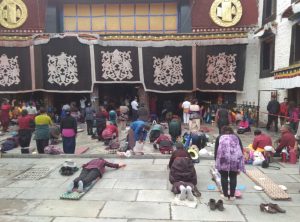
The chanting in the Jokhang Temple usually begins in the afternoon. It is the same meaning for the Tibetan people to see a chanting in the Jokhang Temple and to see the national flag in Tiananmen Square.
The observation deck on the second floor of the Jokhang Temple has a limited bearing capacity. You can see the scene of the worship of the square in front of the Jokhang Temple, and you can also look at the mountains in the distance.
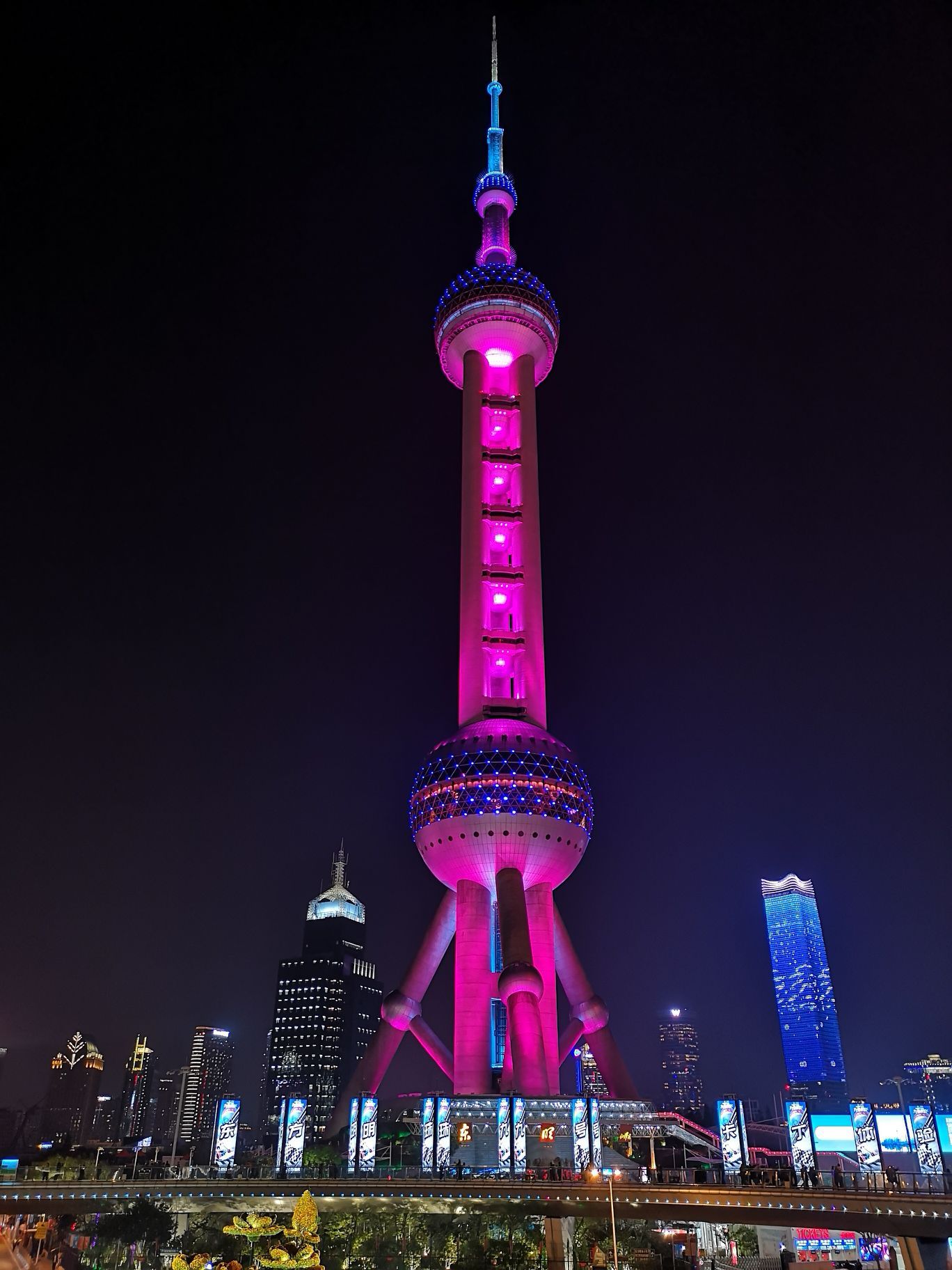
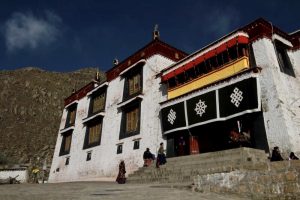 As the largest temple in the world, Drepung Monastery has a maximum of more than 10,000 people, and the tour there takes about 3 to 4 hours. There are countless halls in Drepung Monastery, the most famous of which are the Gandan PoZhang Hall (5th Dalai Palace) and the Cuoqin Hall.
As the largest temple in the world, Drepung Monastery has a maximum of more than 10,000 people, and the tour there takes about 3 to 4 hours. There are countless halls in Drepung Monastery, the most famous of which are the Gandan PoZhang Hall (5th Dalai Palace) and the Cuoqin Hall.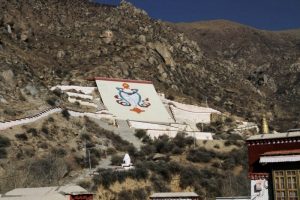
 In the area of Shanghai Yu Garden (City God Temple), it is now mainly the Shanghai Commodity Market, and is also the most commercial center with Shanghai characteristics, but most of them are old-fashioned buildings and nostalgic places. This is mainly a distribution center for small commodities.
In the area of Shanghai Yu Garden (City God Temple), it is now mainly the Shanghai Commodity Market, and is also the most commercial center with Shanghai characteristics, but most of them are old-fashioned buildings and nostalgic places. This is mainly a distribution center for small commodities.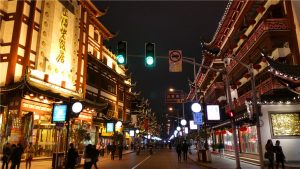 The Old Street is all together with Yu Garden and City God Temple, which features Red ancient buildings, lively small commercial streets, and there are so many people. It is very worthwhile to go a visit there. There are a few large ancient buildings, which are very stylish and lively, and all kinds of small goods are for sale on the street.
The Old Street is all together with Yu Garden and City God Temple, which features Red ancient buildings, lively small commercial streets, and there are so many people. It is very worthwhile to go a visit there. There are a few large ancient buildings, which are very stylish and lively, and all kinds of small goods are for sale on the street.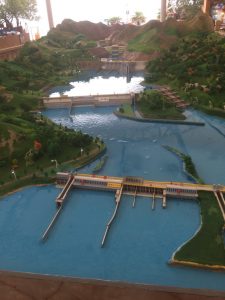 The scenery of the Three Gorge Dam is good, and it is free of charge now, but you need to pay the full ticket of the whole journey, and the round-trip ticket is 30 yuan. The downstream ticket for sightseeing car tour is 35 yuan, the ticket is 150 Yuan for the boat tour, but you can buy 35 Yuan tickets first, then go to the tourist attractions to add extra 30 Yuan to the staff for the boat ticket, which means that you just spend 30 yuan buying a boat trip ticket, and can also travel by car. The travel company’s toll collection fee is high, you can choose to buy tickets directly from the attraction staff, it will be much cheaper.
The scenery of the Three Gorge Dam is good, and it is free of charge now, but you need to pay the full ticket of the whole journey, and the round-trip ticket is 30 yuan. The downstream ticket for sightseeing car tour is 35 yuan, the ticket is 150 Yuan for the boat tour, but you can buy 35 Yuan tickets first, then go to the tourist attractions to add extra 30 Yuan to the staff for the boat ticket, which means that you just spend 30 yuan buying a boat trip ticket, and can also travel by car. The travel company’s toll collection fee is high, you can choose to buy tickets directly from the attraction staff, it will be much cheaper.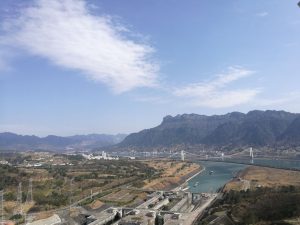
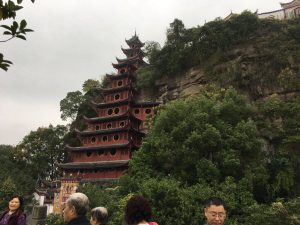 Shibaozhai has a total of 12 floors, and it is next to the Yangtze River. The Yuyin Mountain, which rises from the riverside, is like a goshawk that flies higher and higher, flying between the water and the sky. Do remember carefully walk into the building, the wooden floor trembled under the feet, and you will find out that each floor of the entire Zhailou is supported by several planks on the stone wall. There are no steel nails, no cement, no holes, only a tight bite. Gently stroking the miracle that is close at hand, you will feel the wisdom of the ancestors.
Shibaozhai has a total of 12 floors, and it is next to the Yangtze River. The Yuyin Mountain, which rises from the riverside, is like a goshawk that flies higher and higher, flying between the water and the sky. Do remember carefully walk into the building, the wooden floor trembled under the feet, and you will find out that each floor of the entire Zhailou is supported by several planks on the stone wall. There are no steel nails, no cement, no holes, only a tight bite. Gently stroking the miracle that is close at hand, you will feel the wisdom of the ancestors.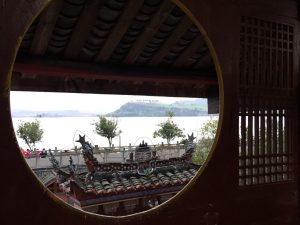 Shibaozhai really deserves the magical work of nature. Although it has been flooded and turned into a bonsai because of the Three Gorges Project, the miracles created by the karst landscape are still intact. The carvings of Shibaozhai are small and exquisite and unique.
Shibaozhai really deserves the magical work of nature. Although it has been flooded and turned into a bonsai because of the Three Gorges Project, the miracles created by the karst landscape are still intact. The carvings of Shibaozhai are small and exquisite and unique.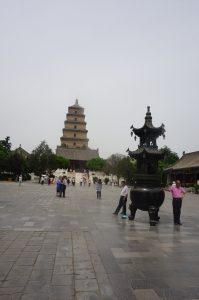 Dacien Temple and Big Wild Goose Pagoda are favorite spots for the trip to Xi’an. It is close to the Shaanxi History Museum. It is recommended to visit them at the same day. The transportation is convenient. You can check the bus line on the Gaode map. The temple is inside the Pagoda, and you need buy the ticket for the temple first, then you can enter into the Pagoda. After entering, you can choose to spend 50 yuan for a lecturer as needed. Or you can just walk slowly to view the scenery inside. You can enter every room and look at it carefully and you will get a lot of rewards. Most of the travelers there especially like the stories about the Sakyamuni and Xuan Zang Masters. You can see the Big Wild Goose Pagoda soon, but you need spend 30 yuan to buy a ticket to climb the tower. If you don’t have a commentator, you can scan WeChat and listen to the electronic voice commentary.
Dacien Temple and Big Wild Goose Pagoda are favorite spots for the trip to Xi’an. It is close to the Shaanxi History Museum. It is recommended to visit them at the same day. The transportation is convenient. You can check the bus line on the Gaode map. The temple is inside the Pagoda, and you need buy the ticket for the temple first, then you can enter into the Pagoda. After entering, you can choose to spend 50 yuan for a lecturer as needed. Or you can just walk slowly to view the scenery inside. You can enter every room and look at it carefully and you will get a lot of rewards. Most of the travelers there especially like the stories about the Sakyamuni and Xuan Zang Masters. You can see the Big Wild Goose Pagoda soon, but you need spend 30 yuan to buy a ticket to climb the tower. If you don’t have a commentator, you can scan WeChat and listen to the electronic voice commentary.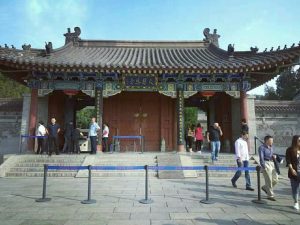
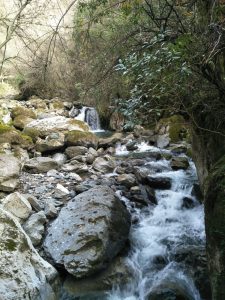 Shennong Stream is located in the western border of Hubei Province. It borders Baokang County of Hubei Province in the east, Wushan County in Chongqing in the west, Xingshan, Badong and the Three Gorges in the south, and Fangxian, Zhushan and Wudang in the north. And features the east longitude 109°56′~110°58′, north latitude 31°15′~31°75′, total area 3253 square kilometers, and 5 towns and 3 townships and 1 national forest and wild animal type nature reserve, 1 state-owned forest Enterprise Forestry Administration and 1 National Wetland Park, and the forest land accounts for more than 85%. Shennong Stream was approved by the State Council in 1970 and is directly under the jurisdiction of Hubei Province. It is the only administrative district in China named after the “forest area”.
Shennong Stream is located in the western border of Hubei Province. It borders Baokang County of Hubei Province in the east, Wushan County in Chongqing in the west, Xingshan, Badong and the Three Gorges in the south, and Fangxian, Zhushan and Wudang in the north. And features the east longitude 109°56′~110°58′, north latitude 31°15′~31°75′, total area 3253 square kilometers, and 5 towns and 3 townships and 1 national forest and wild animal type nature reserve, 1 state-owned forest Enterprise Forestry Administration and 1 National Wetland Park, and the forest land accounts for more than 85%. Shennong Stream was approved by the State Council in 1970 and is directly under the jurisdiction of Hubei Province. It is the only administrative district in China named after the “forest area”.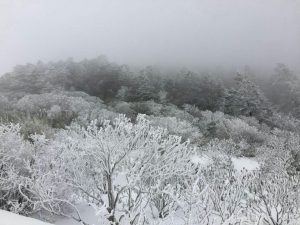 Special reminder: you must bring your clothes to keep warm when you come to the Shennong Stream. The air here is pure, the weather on the mountain is about ten degrees all year round. A mountain, from the mountain to the mountain, let you feel four seasons all year round. And if you like enjoying natural scenery, the Shennong Stream is an ideal scenic spot for you to have a visit. You will enjoy the environment there.
Special reminder: you must bring your clothes to keep warm when you come to the Shennong Stream. The air here is pure, the weather on the mountain is about ten degrees all year round. A mountain, from the mountain to the mountain, let you feel four seasons all year round. And if you like enjoying natural scenery, the Shennong Stream is an ideal scenic spot for you to have a visit. You will enjoy the environment there.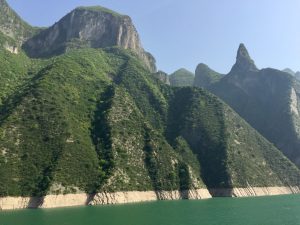 Wu Gorge is the most coherent and neat gorge in the Three Gorges. It is divided into east and west sections. The western section is composed of Jinkui Yinjia Gorge and Jianchuan Gorge. The eastern section is composed of Tie Guan Gorge and Menshan Gorge. The famous 12 peaks of Wushan are located on both banks, with each six peaks in the north and south. The twelve peaks are picturesque and full of gestures, which is the essence of the Wu Gorge. Among the twelve peaks, the goddess peak is the most famous. However, if you visit the Wu Gorge by boat, you can only see nine peaks. And you must disembark if you want to see the Shangsheng peak, Qiyun Peak, and Jingtan Peak, and they can be seen only near the Qingshi Town.
Wu Gorge is the most coherent and neat gorge in the Three Gorges. It is divided into east and west sections. The western section is composed of Jinkui Yinjia Gorge and Jianchuan Gorge. The eastern section is composed of Tie Guan Gorge and Menshan Gorge. The famous 12 peaks of Wushan are located on both banks, with each six peaks in the north and south. The twelve peaks are picturesque and full of gestures, which is the essence of the Wu Gorge. Among the twelve peaks, the goddess peak is the most famous. However, if you visit the Wu Gorge by boat, you can only see nine peaks. And you must disembark if you want to see the Shangsheng peak, Qiyun Peak, and Jingtan Peak, and they can be seen only near the Qingshi Town.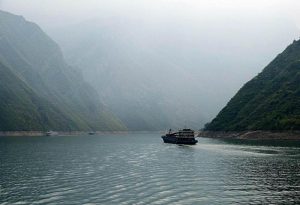
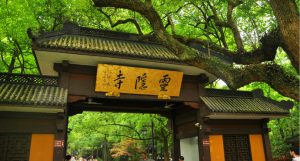 Adjacent to the West Lake, LingYin Temple is one of the earliest Buddhist monasteries in China and one of China’s top ten ancient temples, which is retaining many fine cultural relics of various dynasties. It has collected a lot of Treasures in the Temple: The “Yunlin Temple” horizontal inscribed board hanging on the Hall of Heavenly Kings is titled by Emperor Kangxi of Qing Dynasty; the Daxiong Hall is dedicated to the statue of Sakyamuni in the largest woodcarving Buddha statue in China. There are Buddhist relics in the temple, such as the ancient Beiye scriptures, and the Ming Dynasty’s writings of Diamond Sutra. There are many fantastic and varied caves on the mountain. There are more than 340 Buddhist statues in the five generations. It is a rare ancient stone art treasure in Jiangnan. Here is the birthplace of Jigong. It is said that the wish here is very effective, and the pilgrims who come to worship the Buddha every day are so a lot.
Adjacent to the West Lake, LingYin Temple is one of the earliest Buddhist monasteries in China and one of China’s top ten ancient temples, which is retaining many fine cultural relics of various dynasties. It has collected a lot of Treasures in the Temple: The “Yunlin Temple” horizontal inscribed board hanging on the Hall of Heavenly Kings is titled by Emperor Kangxi of Qing Dynasty; the Daxiong Hall is dedicated to the statue of Sakyamuni in the largest woodcarving Buddha statue in China. There are Buddhist relics in the temple, such as the ancient Beiye scriptures, and the Ming Dynasty’s writings of Diamond Sutra. There are many fantastic and varied caves on the mountain. There are more than 340 Buddhist statues in the five generations. It is a rare ancient stone art treasure in Jiangnan. Here is the birthplace of Jigong. It is said that the wish here is very effective, and the pilgrims who come to worship the Buddha every day are so a lot.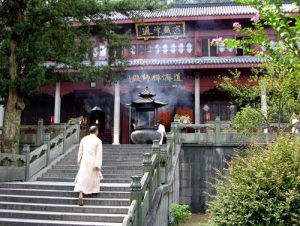 Tips: during Buddha’s birthday, national holidays, the Linyin Temple will be open 30 minutes in advance in the morning.
Tips: during Buddha’s birthday, national holidays, the Linyin Temple will be open 30 minutes in advance in the morning.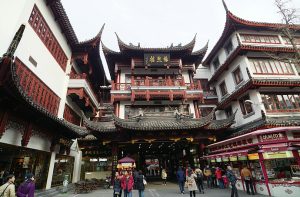 Old City God Temple is located in the center of Shanghai. It reflects the customs of Shanghai people.
Old City God Temple is located in the center of Shanghai. It reflects the customs of Shanghai people.